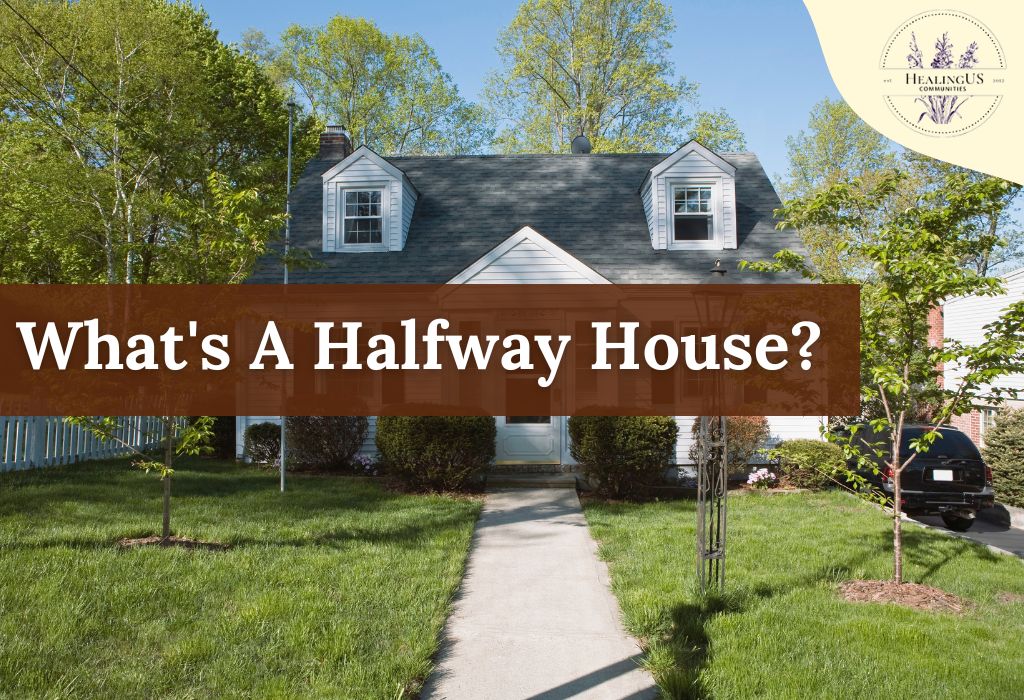Halfway houses are often talked about in rehabilitation and reintegration. Yet, many people don’t know what’s a halfway house and what they do. These houses help people recovering from addiction, leaving prison, or facing significant life changes. This blog will explain what halfway houses are, who uses them, and their key features. We will also look at their role in rehabilitation, the benefits and challenges they offer, and how to find one.
Understanding Halfway Houses
Halfway houses, also called sober living homes or reentry centers. Halfway houses are places where people live when leaving prisons or rehab centers. It provides a transition from prisons, rehab, or substance use treatment to regular life, helping a person reintegrate into society effectively. The main goal is to help people learn skills and gain stability so they can live independently and avoid going back to old habits or ending up in prison again.
Halfway houses give more freedom than prisons or rehab centers but still have rules. Residents must follow curfews, house chores, and attend meetings and therapy sessions. This mix of support and independence helps people slowly adjust to their new lives. After understanding what’s a halfway house, let’s see how it can make a difference.
Who Uses Halfway Houses?
Halfway houses cater to various groups of people, including:
- Individuals Recovering from Addiction: Many residents are recovering from substance abuse and use the supportive environment of a halfway house to maintain sobriety and rebuild their lives.
- Former Inmates: Individuals transitioning out of prison often use halfway houses to ease back into society. These houses provide a structured environment that reduces the risk of recidivism.
- Mental Health Patients: Those with mental health issues may also use halfway houses as part of their recovery process, benefiting from the structured environment and support services.
- Homeless Individuals: Some halfway houses serve as temporary residences for homeless individuals, providing them with stability and resources to find permanent housing.
Key Features of Halfway Houses
Halfway houses offer several key features that distinguish them from other types of residential facilities:
- Structured Environment: While residents have more freedom than in institutional settings, they must follow specific rules and schedules. This structure helps them develop routines and responsibilities.
- Support Services: These houses often provide access to various support services, including counseling, therapy, job training, and educational programs. These services are crucial for residents’ personal and professional development.
- Peer Support: Living with others who are undergoing similar transitions creates a sense of community and peer support. This can be incredibly beneficial for maintaining motivation and sobriety.
- Gradual Reintegration: Halfway houses serve as a bridge between institutional living and complete independence, allowing residents to adjust to everyday life while still receiving support gradually.
- Accountability: Regular meetings, drug tests, and progress reports help ensure that residents remain on track with their recovery or reintegration goals.
The Role of Halfway Houses in Rehabilitation
What’s a halfway house in the context of rehabilitation? It’s a crucial component. They provide a stable and supportive place for personal growth and recovery. For people recovering from addiction, these houses offer a sober environment free from old temptations. The structured setting helps residents build healthy routines and habits, lowering the chance of relapse.
For former inmates, halfway houses help them adjust to life outside prison. They offer support and resources to find jobs, get an education, and learn to live independently. This support is key to reducing the chances of returning to prison and helps former inmates reintegrate into society successfully.
Benefits of Halfway Houses
Halfway houses offer numerous benefits for residents, including:
- Supportive Environment: A halfway house’s structured and supportive environment assists residents to focus on their recovery and personal growth.
- Access to Resources: Many halfway houses provide access to essential resources such as job training, educational programs, and counseling services. These resources are vital for residents’ long-term success.
- Community and Peer Support: Living with others who are going through similar experiences fosters a sense of community and peer support, which can be incredibly motivating and encouraging.
- Reduced Risk of Relapse or Recidivism: The structured environment and support services offered by halfway houses significantly reduce the risk of relapse for individuals recovering from addiction and recidivism for former inmates.
- Gradual Transition to Independence: Halfway houses provide a gradual transition from institutional living to complete independence, allowing residents to develop the skills and confidence needed to live independently.
Challenges and Considerations
While halfway houses offer many benefits, there are also challenges and considerations to keep in mind:
- Limited Availability: There may be a shortage of halfway houses in certain areas, leading to long waiting lists and limited access for those in need.
- Funding and Resources: Many halfway houses rely on government funding or charitable donations, which can be inconsistent and insufficient to meet all residents’ needs.
- Rules and Restrictions: Some residents may find the rules and restrictions of halfway houses challenging to adhere to, which can lead to conflicts or even expulsion from the program.
- Stigma: There can be a stigma associated with living in a halfway house, which may affect residents’ self-esteem and ability to find employment or housing after leaving the program.
- Quality of Services: The quality of services and support provided by halfway houses can vary significantly, so it’s important to research and choose a reputable facility.
How to Find a Halfway House
Finding a suitable halfway house requires some research and consideration. Here are some steps to assist you in finding a suitable facility:
- Consult with Professionals: Speak with healthcare providers, counselors, or social workers who may have recommendations for reputable halfway houses in your area.
- Research Online: Use online resources and directories to find halfway houses and read reviews from former residents to get a sense of the quality of services provided.
- Visit Facilities: If possible, visit potential halfway houses to see the living conditions, meet the staff, and learn more about the programs and support services offered.
- Check Accreditation: Look for halfway houses that reputable organizations accredit, as this can be an indicator of the quality and reliability of the facility.
- Consider Location: Choose a halfway house that is conveniently located near employment opportunities, educational institutions, and support networks.
- Ask Questions: Don’t hesitate to ask questions about the house’s rules, support services, costs, and any other concerns you may have.
Conclusion
Halfway houses play a vital role in helping individuals transition from institutional settings to independent living. They provide a structured and supportive environment that promotes recovery, personal growth, and successful reintegration into society. While there are challenges and considerations to keep in mind, the benefits of halfway houses make them an essential component of the rehabilitation process for many people. We hope this has helped you understand what’s a halfway house and its vital importance in the rehabilitation journey.
Join us at HealingUS to support and advocate for these critical services, ensuring everyone has the opportunity for a successful transition and a brighter future.
FAQs
Q: What is the main purpose of a halfway house?
A: The main purpose of a halfway house is to provide a transitional living environment that helps individuals recover from addiction, reintegrate into society after incarceration, or deal with other significant life changes. These houses offer structure, support, and resources to help residents develop the skills needed for independent living.
Q: How long can someone stay in a halfway house?
A: The length of stay in a halfway house can vary depending on the individual’s needs and the specific program. Stays can range from a few months to a year or more.
Q: Are halfway houses the same as rehabilitation centers?
A: No, halfway houses are not the same as rehabilitation centers. Rehabilitation centers typically provide intensive, short-term treatment for addiction or other issues, while halfway houses offer a longer-term, supportive living environment for individuals transitioning back to independent living.
Q: How are halfway houses funded?
A: Funding for halfway houses can come from various sources, including government grants, charitable donations, and resident fees. The availability of funding can affect the quality and range of services provided.
Q: What rules do residents have to follow in a halfway house?
A: Residents in halfway houses typically have to follow rules such as adhering to curfews, participating in house chores, attending regular meetings and therapy sessions, and undergoing drug tests. The specific rules may differ depending on the facility.



